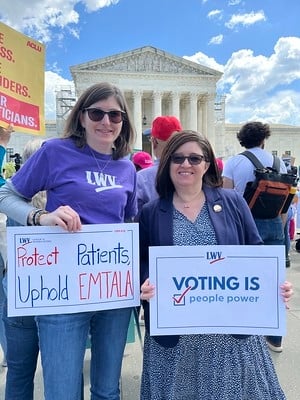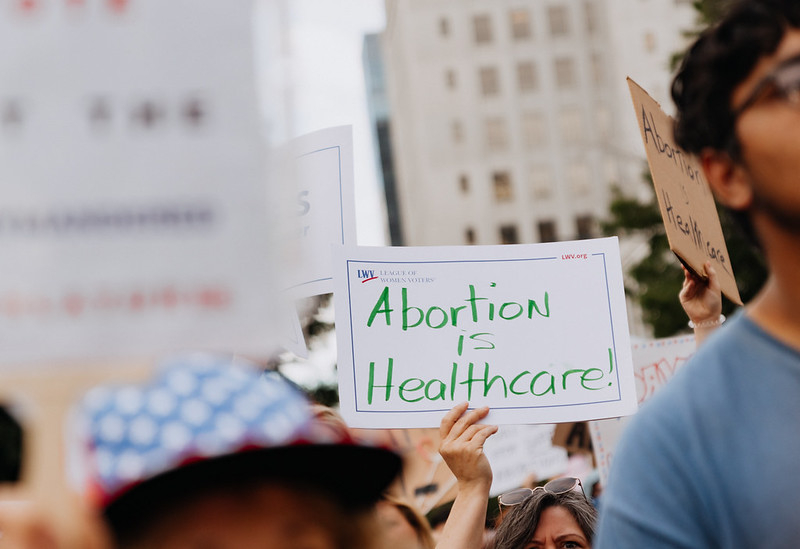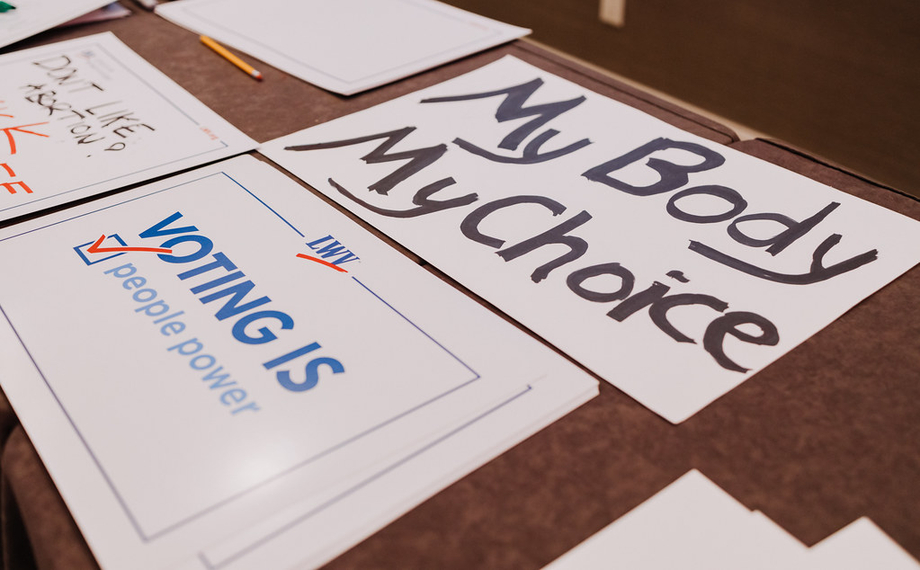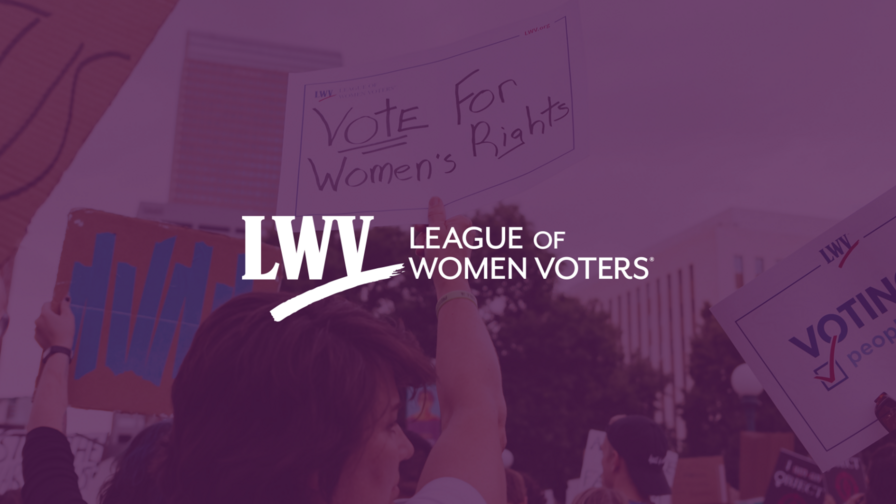Explaining the Abortion Care Challenge in United States v. Idaho
This blog examines United States v. Idaho, a federal challenge to the near-total state abortion ban passed in Idaho. Advocates for bodily autonomy and reproductive justice have followed the case since it was filed in August 2022; it reached the US Supreme Court in June 2024.
We explains the laws at issue, how the case came before the US Supreme Court, and the implications of the Court’s divided decision that sent the case back to the district court.
Stay Updated
Keep up with the latest news. Receive emails to your inbox!
Idaho's Restrictive Abortion Law
In June 2022, the United States Supreme Court ruled in Dobbs v. Jackson Women’s Health Organization that the US Constitution does not protect the right of a pregnant person to receive an abortion, overturning Roe v. Wade and Planned Parenthood v. Casey. Since that decision, states across the country have passed various restrictions on abortion, from outright bans with very narrow exceptions to restrictions limiting which medical professionals may perform abortions or how many appointments a patient must have before receiving an abortion.
One of those restrictive abortion laws — the Defense of Life Act, passed by the state of Idaho — reached the US Supreme Court. The question for the Court was whether, in certain situations, the Idaho law violates a federal law (the Emergency Medical Treatment and Labor Act, below) that protects patients in emergencies.

But the US Supreme Court ultimately refused to answer that question. Instead, the Court returned the case to the lower court to continue with the regular course of litigation. The Court’s avoidance means that Idaho’s abortion ban will be put on hold while the case proceeds. This temporarily guarantees the rights of pregnant patients to receive abortions in situations where it is necessary to protect the health of someone experiencing an emergency medical condition.
But rather than being a win for reproductive autonomy, this decision is better understood as a delay to justice. It highlights how fragile reproductive freedom is in the United States. It’s critical to understand the questions presented by this case and the implications of the US Supreme Court’s decision to dismiss Idaho’s appeal.
The Laws at Play in United States v. Idaho
Emergency Medical Treatment and Labor Act (EMTALA)
EMTALA is a federal law passed in 1986 to address concerns that hospitals were failing to provide emergency medical care to uninsured patients. EMTALA requires any hospital that receives funding from Medicare to provide stabilizing care to a patient experiencing an “emergency medical condition.” The law defines “emergency medical condition” as one where being refused medical care would likely lead to “(i) placing the health of the individual (or, with respect to a pregnant [person], the health of the [person] or [their] unborn child) in serious jeopardy, (ii) serious impairment to bodily functions, or (iii) serious dysfunction of any bodily organ or part.”
Idaho’s Defense of Life Act
Idaho, like 12 other states, passed a restrictive “trigger law” in March of 2020. This law, the Defense of Life Act, was an abortion ban that would take effect either immediately or with minimal government action if the United States Supreme Court overturned Roe v. Wade. The Defense of Life Act made it a crime for a physician to perform an abortion, punishable by two to five years imprisonment and loss of the physician’s medical license. The only exceptions would be instances in which the physician believed that an abortion was necessary to save the life of the pregnant person or when the pregnancy was the result of rape or incest.
United States v. Idaho So Far
On August 2, 2022, the United States Department of Justice (DOJ) filed a lawsuit against Idaho. The DOJ argued that in certain situations, Idaho law is preempted by EMTALA.

Preemption refers to the constitutional principle that federal law is the supreme law of the land and trumps state laws. Specifically, the DOJ argued that EMTALA preempted the Defense of Life Act in instances where a pregnant patient arrives at an emergency room and the attending physician believes that the patient’s life is not in immediate danger but their health, bodily functions, or organs are in serious jeopardy and abortion is necessary. In that situation, EMTALA requires that a physician perform the stabilizing care (performing the abortion) even though the Defense of Life Act criminalizes that care.
On August 24, 2022, a federal district judge agreed with the DOJ and blocked Idaho from enforcing the Defense of Life Act when it conflicted with EMTALA. Idaho appealed to the US Court of Appeals for the Ninth Circuit and asked it to stay the district court’s decision; this would prevent the decision from taking effect and allow the state to continue enforcing the Defense of Life Act while the appeal was ongoing. On September 28, 2023, a three-judge panel put the lower court’s decision on hold. Still, the full Ninth Circuit overturned the panel’s decision and reinstated the decision on November 13, 2023, blocking Idaho’s abortion ban from going into effect.
Idaho next turned to the United States Supreme Court, asking the Justices to put the district court’s decision on hold. On January 5, 2024, the Supreme Court agreed to stay the district court’s order and hear oral arguments to determine whether the Defense of Life Act conflicts with and is preempted by EMTALA. This order allowed Idaho’s abortion ban to go into effect while the US Supreme Court considered the case. Oral arguments were set for April 24, 2024.
Arguments at SCOTUS
Idaho tried to resolve the conflict between EMTALA and the Defense of Life Act by arguing that there was no conflict at all. According to Idaho’s reading of EMTALA, doctors must only provide stabilizing care that is “available.” Because Idaho law bans abortions, abortions are not “available,” and EMTALA, therefore, does not require physicians to perform them. This argument is based on the state’s reading of hospitals’ requirements under EMTALA. If a patient is experiencing an emergency medical condition, the hospital must provide services to stabilize a patient “within the staff and facilities available.”
According to Idaho, EMTALA does not require any particular treatment, particularly one banned by state law; rather, it guarantees equal treatment between patients who can pay for treatment (whether out of pocket or through insurance) and those who cannot. In the state’s view, holding that EMTALA requires doctors to perform abortions to protect the health or organs of a pregnant person experiencing an emergency medical condition when state law forbids it would turn EMTALA into a “state-law wrecking ball.”

The federal government, meanwhile, argued that Idaho’s reading of the law is flawed. According to the federal government, the requirement that hospitals provide "available" care is not a reference to state law but to the hospital's spatial, medical, and personnel restrictions. It is an acknowledgement that not all hospitals have access to the same technologies and treatments. If a rural hospital cannot perform a certain procedure, even on an insured patient, EMTALA does not force them to perform it on an uninsured patient. However, if the hospital does have the capacity to perform the procedure on the insured patient, they must do so on an uninsured patient experiencing an emergency medical condition.
Furthermore, the federal government argued that, despite being enacted out of a concern that patients were being turned away, the text of EMTALA is much broader than simply requiring equality of care. First, EMTALA requires hospitals to perform stabilizing care, which is defined as any care that “may be necessary to assure, within reasonable medical probability, that no material deterioration of the condition” will occur. Second, it mandates that stabilizing care be provided not just for patients who cannot pay but for any individual experiencing an emergency medical condition.
The League of Women Voters of the United States filed an amicus brief agreeing with the federal government that EMTALA’s requirement of stabilizing care is not restricted by state law. To agree with Idaho would rewrite EMTALA, placing state law ahead of federal law and turning the concept of preemption on its head.
The brief also highlights the maternal health crisis in the United States; pregnant patients in the United States are ten times more likely to die than pregnant patients in other high-income countries. Indigenous and Black pregnant individuals, meanwhile, are twice and three times as likely to die from pregnancy-related conditions, respectively. Allowing the Idaho law to stand would exacerbate this crisis in Idaho and any state that adopts a similar law.
Support our legal work!
The Decision in United States v. Idaho
On June 27, 2024, the United States Supreme Court issued a one-sentence order that returned the case to the trial court and reinstated the trial court’s order blocking the Idaho law in situations where it conflicts with EMTALA. The decision to dismiss the appeal resulted from different reasoning among the Justices.
Justice Kagan (along with Justices Sotomayor and Jackson) favored dismissal. In her view, the Idaho law is clearly preempted by EMTALA, and Idaho’s arguments to the contrary did not justify the Court’s involvement at such an early stage of the litigation.
Justice Barrett (along with Chief Justice Roberts and Justice Kavanaugh), however, justified the Court’s decision to dismiss the appeal by citing the changing nature of the litigation. For example, the Idaho Legislature had redefined certain terms in the statute since the district court had issued its injunction, and the parties had raised new questions not previously considered by the lower court. She argued that in such a situation, it would be improper for the US Supreme Court to rule on the case's merits.
Justice Jackson, writing alone, argued forcefully for the US Supreme Court to decide the case's merits. She argued that, in certain circumstances, the Defense of Life Act plainly violates EMTALA, and no changes to Idaho law erased that conflict. Her opinion centered on the human impact of the Supreme Court’s “months-long catastrophe,” noting that “Idaho physicians were forced to step back and watch as their patients suffered or arrange for their patients to be airlifted out of Idaho” because the Supreme Court decided to let the Idaho law remain in effect.
Meanwhile, Justice Alito, together with Justices Thomas and Gorsuch, dissented from the Court’s decision to dismiss the appeal. Alito’s opinion rests largely on the view that EMTALA requires a hospital “to treat, not abort, an ‘unborn child,’” and that nothing in the law requires a hospital or physician to perform an abortion to protect a pregnant patient from an emergency medical condition.
What United States v. Idaho Means for the US
United States v. Idaho was not the only case related to reproductive care during the Court’s October 2023 term. The Court also heard a challenge to the Food and Drug Administration’s (FDA’s) approval of the medication abortion drug mifepristone in Food and Drug Administration v. Alliance for Hippocratic Medicine. There, the Court preserved access to mifepristone, holding that the challengers had failed to demonstrate their right to sue the FDA (read more).

On their faces, each of the reproductive care-related cases heard by the Supreme Court were positive decisions for reproductive rights. Mifepristone remains on the market, and in Idaho, doctors may, for now, perform abortions when needed to protect a pregnant person’s health and safety.
But under the surface, these two decisions demonstrate the precarity of reproductive rights in the United States, as each decision rests on procedural grounds and could easily be undone in the future. The implications of this uncertainty are made clear in Justice Jackson’s opinion in United States v. Idaho, where she notes that as the “Court dawdles and the country waits, pregnant people experiencing emergency medical conditions remain in a precarious position, as their doctors are kept in the dark about what the law requires.”
It is thus critical to support laws and policies that favor reproductive autonomy, including ballot initiatives that seek to protect or expand access to reproductive care. Before the 2024 elections in November, see if reproductive cases are on your ballot, check where your candidates stand, and ensure you’re registered and ready to vote at VOTE411.org. Our voices — and votes — are essential in the fight for reproductive rights.
The Latest from the League
The Supreme Court case Moyle v. United States could leave women and people who can become pregnant at risk of permanent bodily harm, creating a patchwork in which some states provide reproductive freedom and equal citizenship for people who can become pregnant while others don’t.
Abortion will not and should not be left to the whim of state legislatures, particularly when people’s health and lives are at risk.
WASHINGTON — The League of Women Voters of the United States joined an amicus brief filed in the consolidated Idaho v. United States and Moyle v. United States cases before the US Supreme Court. The cases concern whether states can block pregnant people from getting emergency abortion care in hospitals, which if adopted, would have devastating implications for pregnant people facing medical emergencies. The amicus brief is led by the National Women’s Law Center and the League is represented by Cohen Milstein.
Sign Up For Email
Keep up with the League. Receive emails to your inbox!
Donate to support our work
to empower voters and defend democracy.





